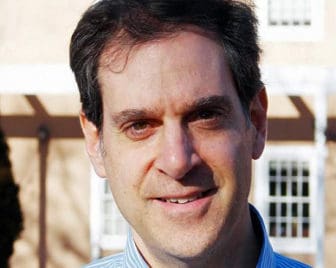COMMENTARY: New Mexico lawmakers included $40 million for improving school safety in this year’s state budget, to pay for security features like metal detectors, surveillance cameras and bulletproof windows.
Lawmakers should also consider what they might do about a surprising and often overlooked factor in school shootings: they are disproportionately concentrated in large schools.

Courtesy photo
Fred Nathan
In 2017, researchers at Vassar College published an analysis of the mass school shootings that had occurred between 1995-2014. They discovered that schools where mass shootings occurred had significantly higher student enrollments than the average in their states.
These findings are consistent with two decades of research by the U.S. Department of Education. Between 1998 and 2017, the department issued a series of studies on violence in schools, and found that serious violent crimes – including attacks with weapons – occur far more frequently at schools enrolling more than 1,000 students than smaller schools. In fact, the department identified large school size as one of only five characteristics that increased the likelihood of a serious violent incident occurring.
In the 2016-2017 school year, nearly two-thirds of New Mexico ninth graders entered high schools with populations larger than 1,000 students.
According to the U.S. Department of Education, 35 percent of schools enrolling more than 1,000 students experience serious violent crimes. This is more than twice the percentage of schools enrolling 300-999 students that experience similar incidents – and five times higher than the percentage of schools enrolling fewer than 300 students, only 7 percent of which experience serious violent crimes.
While our state government plans to spend $40 million in the next year on school security measures, likely concentrated in the largest schools with the highest risk of violence, every year for the past two decades New Mexico has spent $65-250 million on school construction projects through the Public Schools Facilities Authority (PSFA).
Unfortunately, millions of those dollars have gone to build schools that are too large to be safe. Over the past decade, schools enrolling more than 1,000 students have been built in communities ranging from Gallup to Deming to Las Cruces, and many districts have consolidated small elementary schools into larger facilities enrolling 700-800 students. Albuquerque’s two newest high schools, built with PSFA funding, have student populations of 2,172 and 2,572.
It is important to note that the research does not say that violence will never happen in small schools, nor that it is inevitable at large ones. However, the evidence is clear that school shootings and violence are more likely to occur in larger schools.
One reason is that students at large schools are significantly more likely to experience feelings of alienation and isolation than students at smaller schools. Because perpetrators of school shootings often report feelings of social isolation and exclusion, the Vassar researchers suggest that “large, impersonal school settings may create a unique and dangerously toxic environment” for individuals with a tendency toward violence.
Several years ago, Think New Mexico interviewed America Enriquez, who dropped out of her 1,500+ student high school in Albuquerque but went on to earn her high school diploma after being accepted to Amy Biehl Charter School, which enrolls fewer than 300 students. One reason America stopped showing up at her large high school was that, “there were police officers with guns, but even though there was lots of security, you didn’t feel safe.”
At the smaller Amy Biehl Charter School, there were no armed guards, but America felt safe because she knew and was known by all her fellow students and teachers.
Not only are large schools more likely to incubate violence, they also tend to provide worse learning environments. Decades of research have found that smaller schools tend to have higher graduation rates, higher student achievement, and higher levels of satisfaction among students, parents, principals and teachers. Smaller schools can also dramatically improve the performance of low-income children, which helps to narrow the persistent achievement gap.
As the N.M. Legislature looks at making systemic changes to keep our students safer, lawmakers should include reforms that encourage school districts to build smaller, rather than larger, schools. Think New Mexico has previously advocated for legislation to incentivize districts to build smaller schools, and we plan to bring that proposal back for consideration during next year’s legislative session. To learn more about this effort and ask your legislators and the candidates for governor to support it, visit thinknewmexico.org.
Fred Nathan is executive director of Think New Mexico, a results-oriented think tank serving New Mexicans. Agree with his opinion? Disagree? NMPolitics.net welcomes your views. Learn about submitting your own commentary here.
